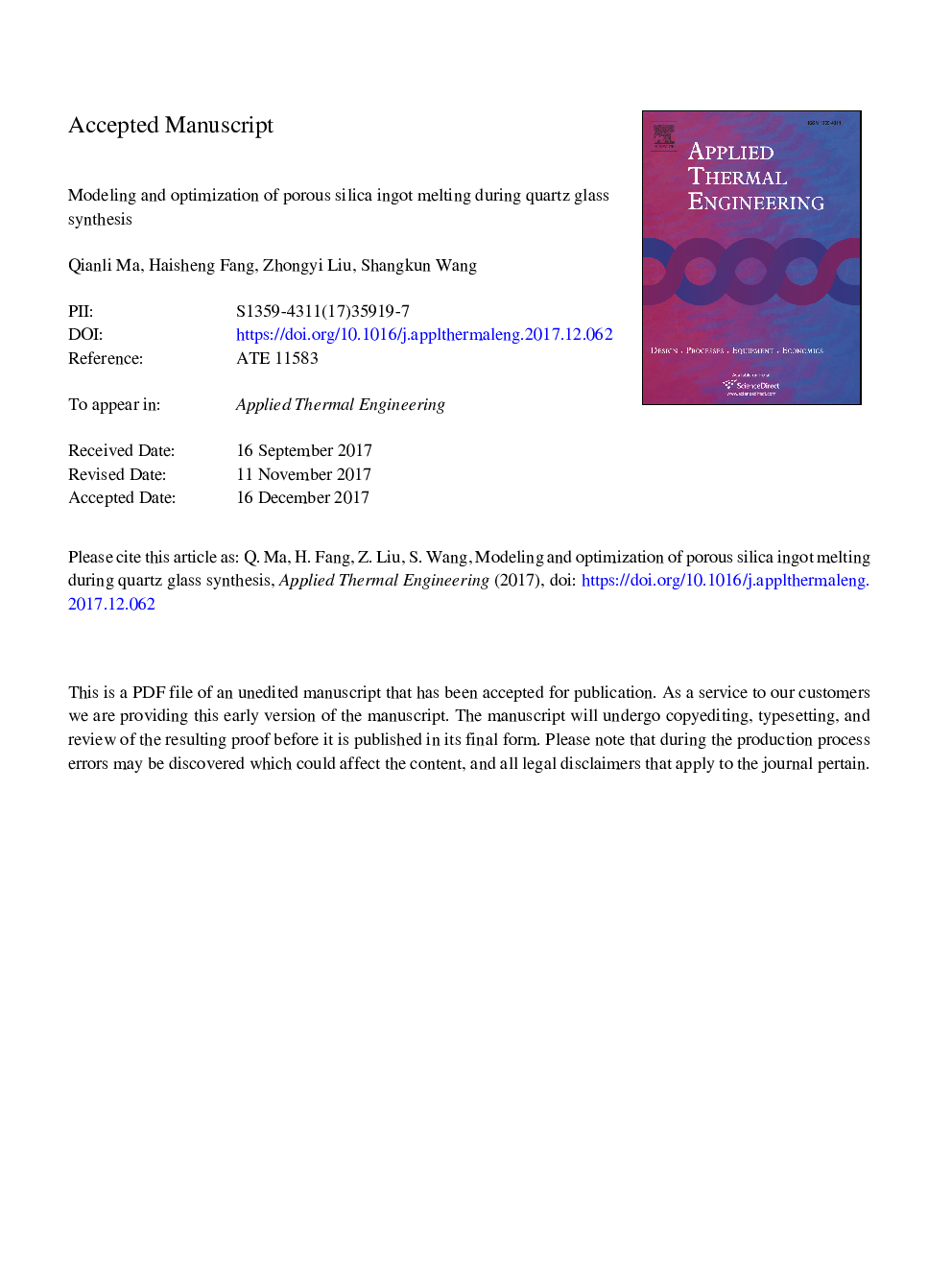| کد مقاله | کد نشریه | سال انتشار | مقاله انگلیسی | نسخه تمام متن |
|---|---|---|---|---|
| 7046274 | 1457098 | 2018 | 25 صفحه PDF | دانلود رایگان |
عنوان انگلیسی مقاله ISI
Modeling and optimization of porous silica ingot melting during quartz glass synthesis
ترجمه فارسی عنوان
مدل سازی و بهینه سازی ذوب شمش سیلیکات متخلخل در سنتز شیشه کوارتز
دانلود مقاله + سفارش ترجمه
دانلود مقاله ISI انگلیسی
رایگان برای ایرانیان
کلمات کلیدی
شیشه کوارتز، عملکرد نوری، انتقال فاز، هیدروکسیل، بهینه سازی،
ترجمه چکیده
شیشه کوارتز به طور گسترده ای در تکنولوژی های مدرن به علت خواص ترموفیزیکی و نوری عالی آن مورد استفاده قرار می گیرد. برای کاهش غلظت هیدروکسیل، یک ناخالص بحرانی که اثر نوری و عمر مفید محصولات شیشه ای را تحت تاثیر قرار می دهد، روند سنتز سنتز شیشه کوارتز با ذوب شدن شمش سیلیکا متخلخل تولید شده در کوره خلاء بهبود می یابد. از آنجا که کوارتز مذاب، شمش سیلیس متخلخل را محاصره کرده و فرار از گاز ها را از هیدروکسیل یا سایر ناخالصی ها منشا می دهد، الگوی ذوب باید با کنترل شرایط عملیاتی بهینه شود. در مقاله، یک مدل یکپارچه برای مطالعه فرآیند ذوب پویای سیلیکا متخلخل، با توجه به انتقال حرارت و تغییر شکل بزرگ سطح، توسعه داده شده است. تأثیرات دمای بخاری، اندازه شمش، خنک کننده کوره و طراحی بوته در فرآیند ذوب با دقت بررسی می شود. بر اساس تجزیه و تحلیل، یک طراحی بوته بهینه شده با خنک کننده جانبی بخاری کوره پیشنهاد شده است تا الگوی ذوب ترجیح داده شده برای افزایش هیدروکسیل حذف شود.
موضوعات مرتبط
مهندسی و علوم پایه
مهندسی شیمی
جریان سیال و فرایندهای انتقال
چکیده انگلیسی
Quartz glass is widely used in modern technologies due to its excellent thermophysical and optical properties. To reduce hydroxyl concentration, a critical impurity affecting optical performance and service life of the glass products, traditional synthesis process of the quartz glass is improved by melting the prepared porous silica ingot in a vacuumed furnace. Since the molten quartz encloses the porous silica ingot, and blocks escape of the gases, originated from hydroxyl or other impurities, the melting pattern should be optimally designed by controlling the operating conditions. In the paper, an integrated model has been developed to study the dynamic melting process of the porous silica ingot, considering heat transfer and large surface deformation. Influences of the heater temperature, the ingot size, the furnace cooling and the crucible design on the melting process are investigated carefully. Based on the analysis, an optimized crucible design with partial sidewall cooling of the furnace is proposed to obtain the preferred melting pattern for enhancing hydroxyl removal.
ناشر
Database: Elsevier - ScienceDirect (ساینس دایرکت)
Journal: Applied Thermal Engineering - Volume 131, 25 February 2018, Pages 786-792
Journal: Applied Thermal Engineering - Volume 131, 25 February 2018, Pages 786-792
نویسندگان
Qianli Ma, Haisheng Fang, Zhongyi Liu, Shangkun Wang,
